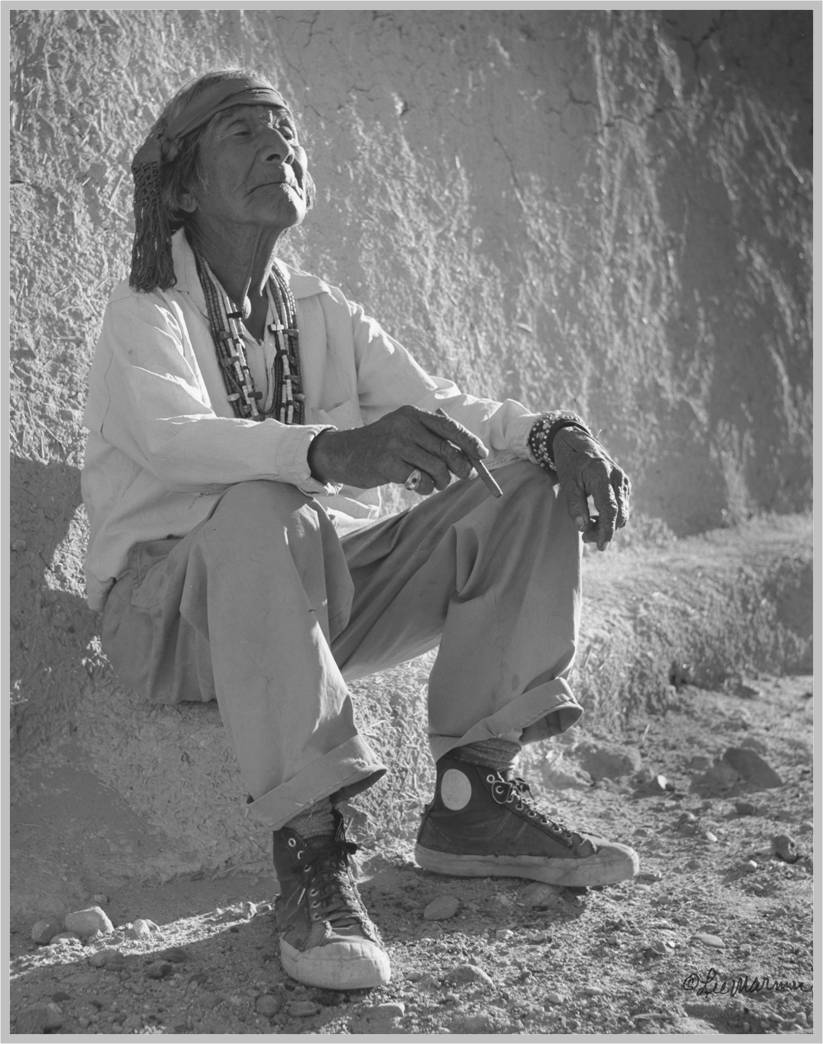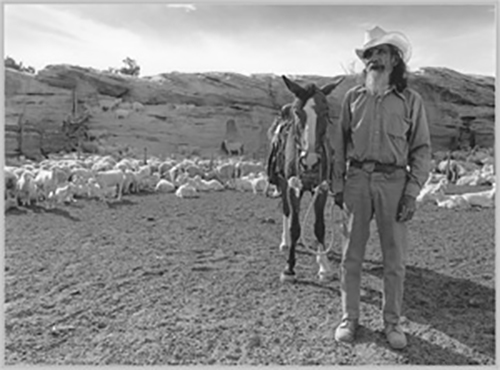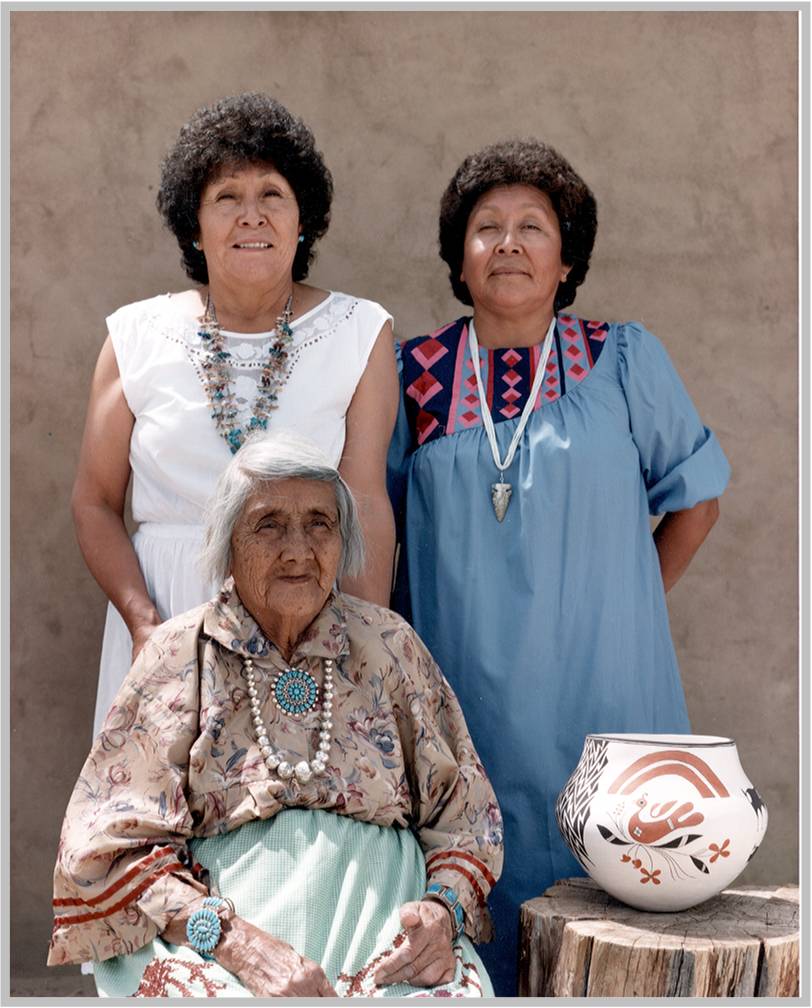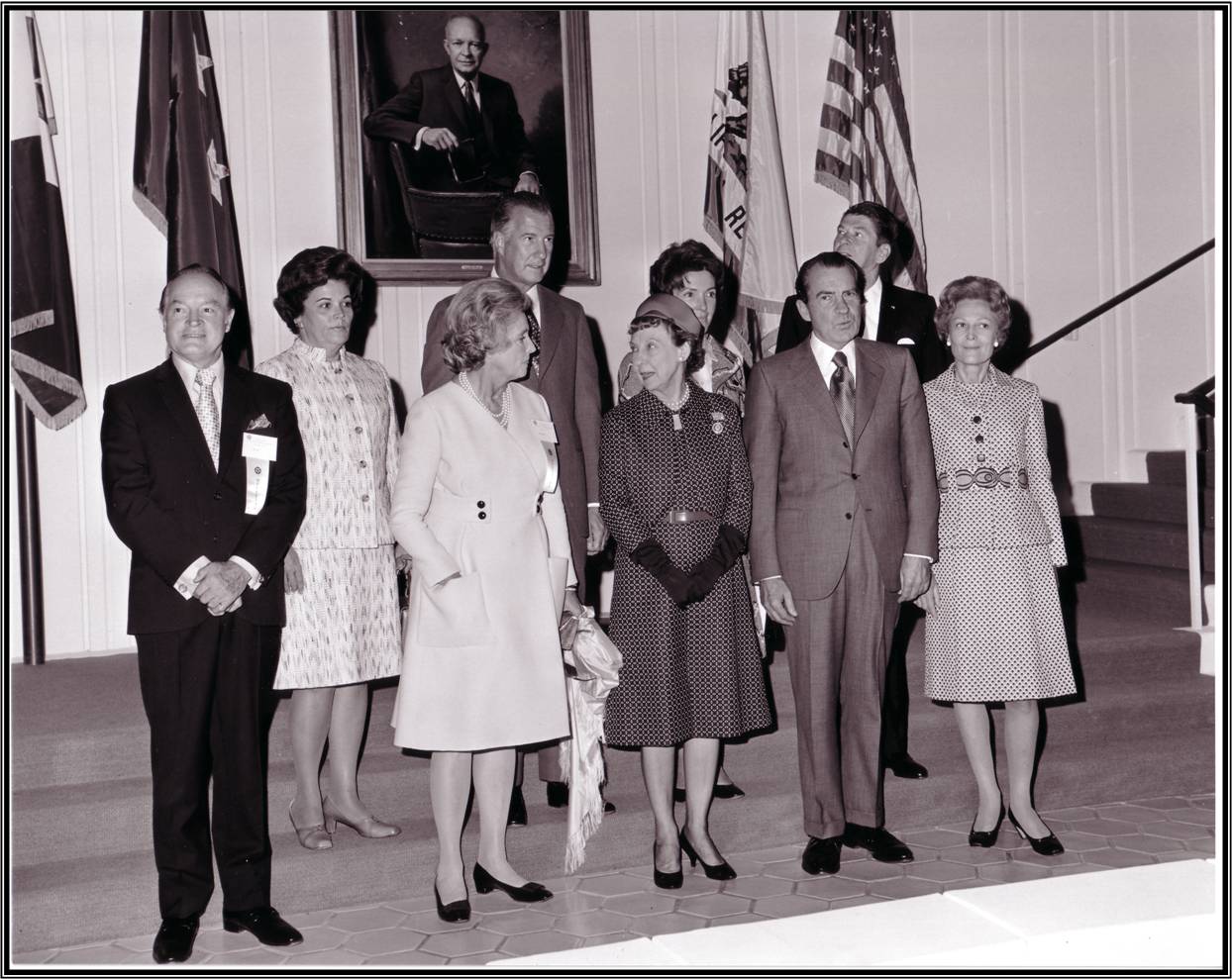
White Man’s Moccasins, Jeff Sousea, 1954.

Benny Pacheco, 1984.

Lucy Lewis, Mary Lewis, Emma Lewis, 1987.

Bob Hope with Presidents, 1971.
Lee Marmon:
Exhibition Subtitle
Master Photographer
One of America’s most renowned Native American photographers, Marmon began his career in 1947, photographing elders and members of his community in Laguna Pueblo, New Mexico. Over the past fifty years Marmon’s work has been exhibited nationally and internationally. His diverse portfolio includes work with Columbia Pictures, official photographer for the Bob Hope Desert Classic for eight years, a Commission for the White House in 1972, and most recently photographing for the American Indian College Fund. The exhibition features photographic prints from throughout his career. All the works in the exhibition have been gifted to the C.N. Gorman Museum collections from the artist.
Artist Statement:
Like the gusts of wind that blow endlessly across the mesas, life in my native New Mexico has unfailingly perpetuated itself. Cultures have risen and fallen across the centuries. The march of time has always obscured individual faces. Most communities left behind only the barest vestiges of their ways as evidence that their civilizations ever existed.
My photography career on the Laguna reservation began as a youthful creative pursuit, but it evolved into something far greater and more lasting than I could have ever imagined. In 1947, my father, Henry Marmon, suggested that I take pictures of the tribal elders, “so we would have something to remember them by”. Given my budding love for photography, it was a task that I embraced with commitment and enthusiasm.
It was by virtue of the confluence of my ethnic identity, my generational positioning, and sheer technological circumstance, that I was uniquely positioned to harness the power of this distinctly white man’s art form, and apply it to give a measure of immortality to the last generation of my people to live by their traditional ways and values.
Now, after more than half a century of practicing my craft, I realize that what I have created amounts to a lasting visual tribute to my native people, and to their now-vanished way of life. In the course of pursuing my life’s calling, I unsuspectingly became the final, humble chronicler of a watershed moment in the cultural evolution of my native people. It is my sincere hope that my collection of thousands of photographs has adequately captured and preserved their spirit, their essence, and their humanity, so that their faces, long since passed, will continue to touch the lives of generations yet unborn.
-- Lee Marmon, 2006
